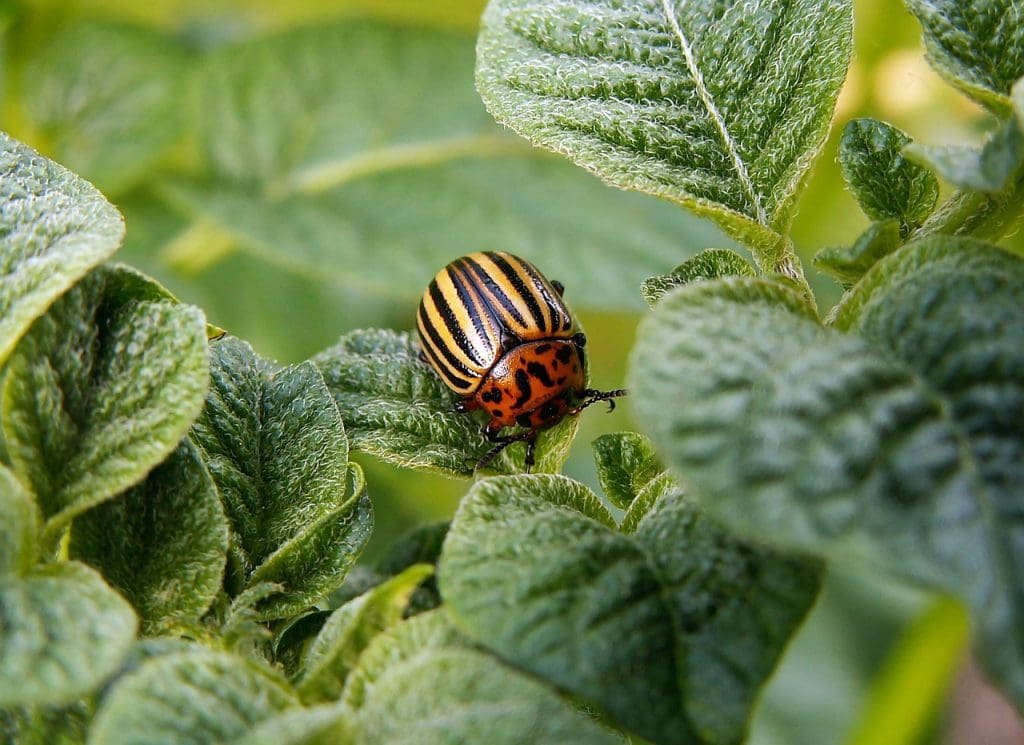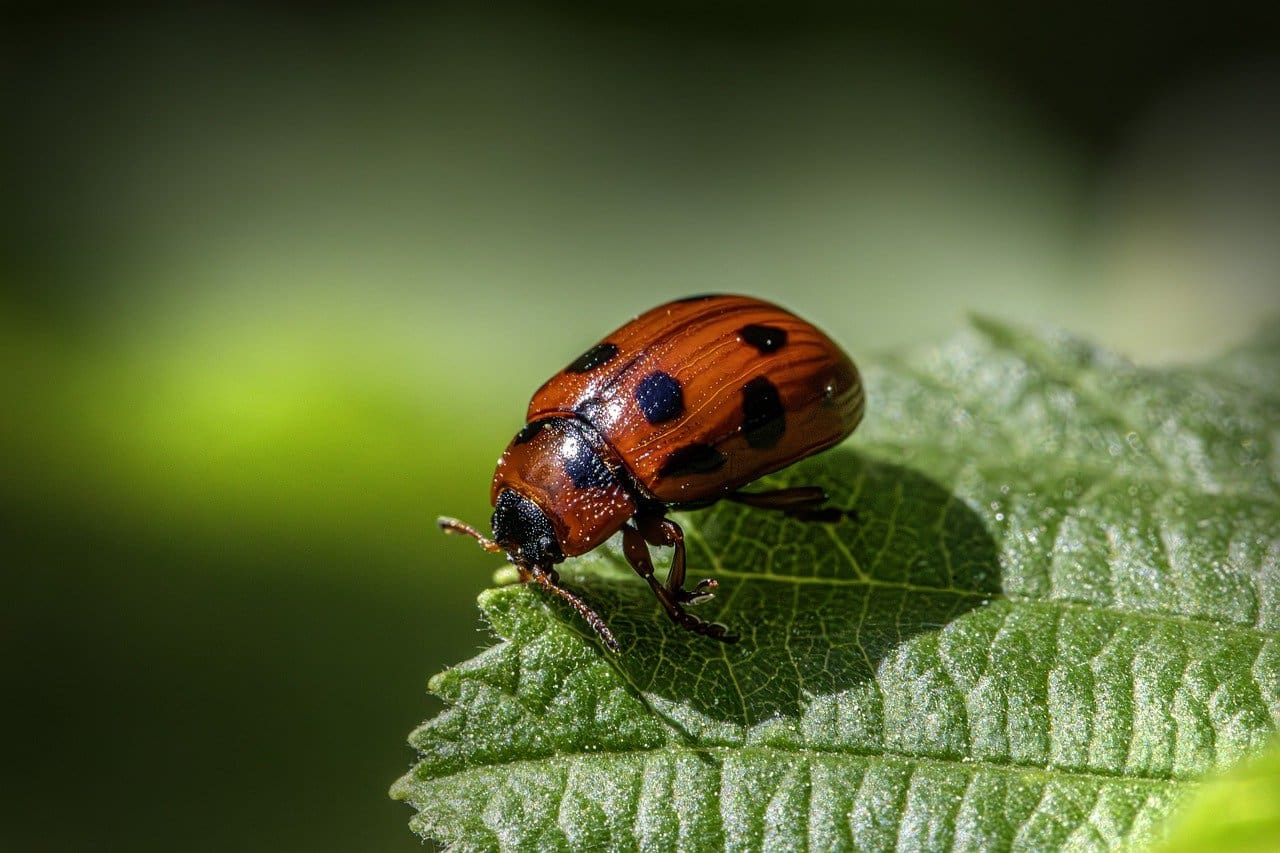In your journey to maintain a healthy and thriving environment, tackling the persistent issue of alligator weed can feel like an uphill battle. “The Benefits of Using Integrated Pest Management for Alligator Weed” delves into how adopting a strategic approach can make a world of difference. By combining biological, mechanical, and chemical methods, Integrated Pest Management (IPM) offers a sustainable and effective solution to control this invasive plant. As you explore this method, you’ll discover not only the benefits of reducing reliance on harmful pesticides but also the positive impact on local ecosystems and biodiversity. Have you ever wondered what the best approach is for managing the invasive Alligator Weed? If you’re grappling with this pesky plant, you’re not alone. Alligator Weed is a formidable opponent in the realm of invasive species, wreaking havoc on ecosystems and agriculture alike. But fear not, there is a light at the end of the tunnel: Integrated Pest Management (IPM), a holistic approach to pest control that is both effective and environmentally friendly. Keep reading, and you’ll discover how you can benefit from using IPM for Alligator Weed!

What is Alligator Weed?
Alligator Weed (Alternanthera philoxeroides) is an aggressive, adaptive perennial plant native to South America. It found its way to North America and many other parts of the world, becoming a significant pest due to its rapid growth, ability to spread easily, and formidable resistance to many control methods. Its thick mats can inhibit water flow, outcompete native plant species, and create extensive damage to ecosystems and agriculture.
Characteristics of Alligator Weed
- Appearance: It has hollow, buoyant stems and dark green, lance-shaped leaves arranged in pairs.
- Growth: Alligator Weed can grow in both aquatic and terrestrial environments.
- Flowering: It produces small, white, papery flowers that cluster in balls.
Understanding the characteristics of Alligator Weed is crucial in tackling its spread effectively.
The Concept of Integrated Pest Management (IPM)
So, what exactly is Integrated Pest Management? IPM is a multi-faceted approach that combines various strategies and practices to manage pest populations in an economically viable and environmentally sustainable manner.
Core Principles of IPM
- Prevention: Measures to prevent pest problems from occurring.
- Monitoring: Regularly monitoring pest populations to identify problems early.
- Decision-making: Using thresholds to decide when to act against pests.
- Multiple Tactics: Implementing a combination of biological, cultural, mechanical, and chemical controls.
- Evaluation: Continuously evaluating the effectiveness of the pest management plan.
IPM’s holistic approach ensures that pest management is efficient while minimizing harm to people, property, and the environment.

Benefits of Using IPM for Alligator Weed
Applying IPM to manage Alligator Weed has numerous benefits. This section delves into the primary advantages of adopting this approach.
Environmentally Friendly
One of the most significant benefits of IPM is its focus on sustainability. Instead of relying solely on chemical herbicides, IPM integrates various methods that are less harmful to the environment.
Cost-Effective
By targeting interventions effectively and reducing the reliance on chemical products, IPM often proves to be more cost-effective in the long run.
Reduces Chemical Resistance
Over-reliance on herbicides can lead to chemical resistance in Alligator Weed. Using a variety of methods helps reduce the chances of resistance developing.
Enhances Biodiversity
By preserving beneficial organisms and reducing chemical use, IPM helps maintain and even enhance biodiversity in affected areas.
Long-term Solution
IPM focuses on long-term control rather than just quick fixes. This approach ensures sustainable management of Alligator Weed over time.
Prevention Strategies
Prevention is the first line of defense in IPM. If you can prevent Alligator Weed from becoming established, you’ve already won half the battle.
Early Detection and Rapid Response
- Regular Monitoring: Regularly inspect your land for early signs of Alligator Weed.
- Educate Yourself: Learn to identify Alligator Weed in all its growth stages.
- Response Plan: Have a plan in place for rapid response if Alligator Weed is detected.
Quarantine Measures
- Clean Equipment: Ensure boats, equipment, and machinery are cleaned before moving them between water bodies.
- Barrier Methods: Use physical barriers in waterways to prevent the spread of Alligator Weed.

Cultural Control
Cultural control methods modify the environment to make it less conducive to the growth of Alligator Weed. These techniques often involve changes in land use practices.
Water Level Management
Controlling water levels can help manage Alligator Weed in aquatic environments.
- Drawdowns: Periodically lowering water levels can reduce Alligator Weed populations.
Crop Rotation
Rotating different crops can disrupt the lifecycle of Alligator Weed and reduce its spread in agricultural settings.
Biological Control
Biological control involves using natural enemies to reduce pest populations. This method can be highly effective and environmentally sustainable.
Beneficial Insects
- Alligator Weed Flea Beetle (Agasicles hygrophila): This beetle is a known predator of Alligator Weed and can significantly reduce its populations.
- Alligator Weed Stem Borer (Vogtia malloi): Another insect that targets Alligator Weed by boring into its stems.
Pathogens
Research is ongoing to identify and deploy pathogens that can naturally suppress Alligator Weed.

Mechanical and Physical Control
Mechanical and physical control methods involve the use of tools or manual labor to manage Alligator Weed.
Hand Pulling
For smaller infestations, hand-pulling Alligator Weed can be effective. However, ensure that all plant parts are removed to prevent regrowth.
Cutting and Mowing
Regular cutting and mowing can help manage terrestrial populations of Alligator Weed.
Dredging
Dredging can be used to remove large infestations of Alligator Weed from aquatic environments but may require permits and can be costly.
| Method | Advantages | Disadvantages |
|---|---|---|
| Hand Pulling | Environmentally friendly, No chemical use | Labor-intensive, Requires thoroughness |
| Cutting and Mowing | Immediate reduction in weed density | Repeated action needed, Can be labor-intensive |
| Dredging | Effective for large infestations | Costly, May need permits |
Chemical Control
While chemical control should not be your go-to method, it can be a part of an integrated strategy, especially when dealing with extensive infestations.
Herbicides
Use herbicides selectively and judiciously to manage Alligator Weed.
- Glyphosate: An effective non-selective herbicide often used against Alligator Weed.
- Imazapyr: Another herbicide that can be used in aquatic and terrestrial environments.
Application Techniques
Effective application is crucial for the success of chemical control measures.
- Spot Treatment: Target specific areas to minimize environmental impact.
- Boom Spraying: For larger areas, but should be managed carefully to avoid off-target damage.
Safety Measures
Always follow the label instructions and safety guidelines when using herbicides. Use personal protective equipment and ensure that the application does not contaminate water sources.

Monitoring and Evaluation
Continuous monitoring and evaluation are crucial components of IPM. These processes ensure that your control measures are effective and allow you to adjust your strategy as needed.
Regular Inspections
Conduct regular inspections to monitor the effectiveness of your IPM program.
- Monthly Surveys: Conduct these surveys to identify pest populations and any regrowth.
- Adaptive Management: Adjust your management tactics based on the monitoring results.
Documentation
Keep detailed records of all pest management activities.
- Record Keeping: Document herbicide applications, biological control releases, mechanical control efforts, and monitoring results.
- Analysis: Use these records to analyze the effectiveness of different strategies and adjust accordingly.
Case Studies
Let’s take a look at some real-world examples where IPM was successfully used to manage Alligator Weed.
Case Study 1: Lake Okeechobee, Florida
Lake Okeechobee faced severe infestations of Alligator Weed. An IPM approach combining biological control agents, such as the Alligator Weed Flea Beetle, and selective herbicide applications significantly reduced weed populations over several years.
Case Study 2: Agricultural Fields in North Carolina
In North Carolina, a combination of crop rotation, herbicide application, and mechanical removal was employed. This integrated approach effectively managed Alligator Weed and helped farmers maintain crop productivity.
Challenges in Implementing IPM for Alligator Weed
While IPM offers numerous benefits, it is not without its challenges.
Resource Needs
Implementing IPM can be resource-intensive. It requires time, labor, and sometimes significant financial investment, especially in the initial stages.
Knowledge and Expertise
Effective IPM requires a good understanding of both the pest and the environment. Professional expertise may be necessary to develop and implement effective strategies.
Coordination
For IPM to be effective, especially in larger areas, there is often a need for coordination among different stakeholders. This can include landowners, local authorities, and pest management professionals.
Tips for Success
To ensure the success of your IPM program for Alligator Weed, consider the following tips:
Be Proactive
Don’t wait for Alligator Weed to become a severe problem. Early detection and action are key.
Educate Yourself
Stay informed about Alligator Weed, IPM principles, and the various control methods available.
Collaborate
Work with local authorities, pest management professionals, and other stakeholders to develop and implement your IPM plan.
Evaluate and Adapt
Regularly monitor and evaluate the effectiveness of your IPM program. Be prepared to adapt your strategies based on the results.
Conclusion
Integrated Pest Management offers a sustainable, effective, and environmentally friendly way to manage Alligator Weed. By combining prevention, cultural, biological, mechanical, and chemical controls, you can keep this invasive plant in check while minimizing harm to the environment and other organisms. Implementing an IPM strategy may require some initial effort and resources, but the long-term benefits make it well worth the investment.
So, are you ready to take a more holistic approach to managing Alligator Weed? With IPM, you have a powerful tool at your disposal, enabling you to protect your land, preserve the environment, and enjoy the peace of mind that comes from effective pest control.
